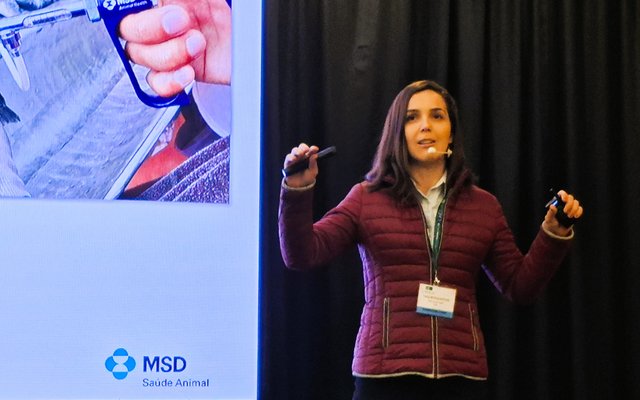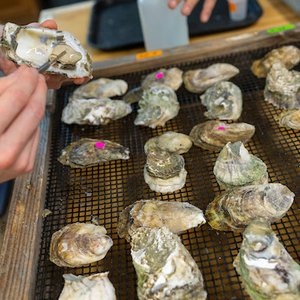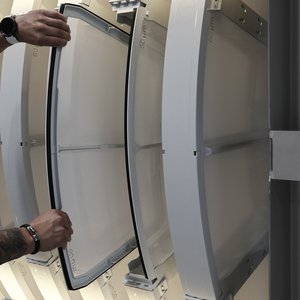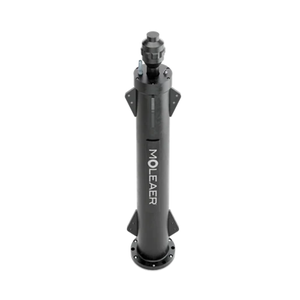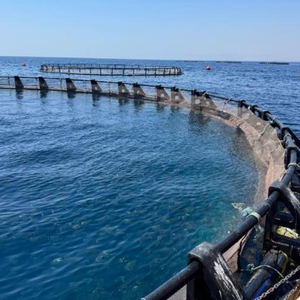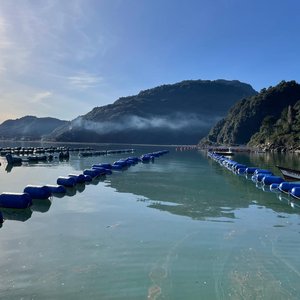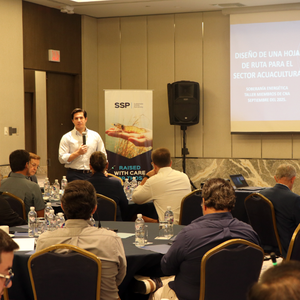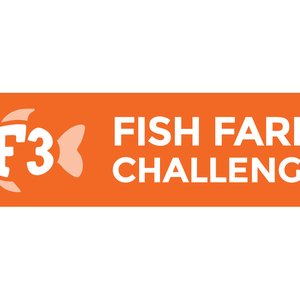Several factors combined have facilitated the production of Nile tilapia (Oreochromis niloticus) in Brazil. Among them, the country's intensive health program stands out, allowing it to achieve the highest tilapia vaccination rate in the world (40% of Brazilian specimens have been immunized). This was explained by Talita Morgenstern, technical coordinator for MSD Animal Health in Brazil, during her presentations at the “Tilapia Health and Well-being” workshop, held on Thursday, October 9, at the international congress “Latin American & Caribbean Aquaculture 2025” (LACQUA), in Puerto Varas, Chile.
Morgenstern stated: “Brazil's climate is suitable for year-round tilapia farming (temperatures fluctuate between 26°C and 30°C), in addition to the species' high adaptability to various farming systems (earth ponds and net tanks); its rapid growth and easy handling; favorable regulation of the use of public waters; significant investments in technology and genetic improvement, along with positive consumer perception, who value this protein's meat for its mild flavor, lack of bones, and culinary versatility.”
In the first presentation, the MSD Animal Health specialist explained that currently Streptococcus sp. and the Infectious Spleen and Kidney Necrosis Virus (ISKNV) are among the main pathogens threatening the health of this species, both in Brazil and worldwide. Morgenstern also indicated: “Streptococcosis in tilapia appeared in the country in the mid-2000s, with cases reported in different states. Affected fish present obvious external symptoms, such as unilateral or bilateral exophthalmia; dropsy and erratic swimming; internal symptoms such as organ adhesions (peritonitis), and splenomegaly and fibrinous heart, in addition to ascites.”
ISKNV, first detected in 2020, is characterized by causing acute mortality in fry and juveniles, as well as subclinical mortality in adults. Associated clinical symptoms include ascites, gill pallor, hepatomegaly and visceral hemorrhage, fluid in the coelomic cavity, bloody intestine, splenic hypoplasia, lethargy and darkening of the body, acute mortality, immunosuppression, and coinfections with other pathogens.
The expert also presented the results of the "Comparison of the quality of inactivated vaccine emulsions for Nile tilapia (O. niloticus) in Brazil" study. The objective of this study was to perform a physicochemical analysis of the emulsions, assessing viscosity, density, pH, centrifugation stability, water content, and microscopic analysis of four vaccines for this species capable of protecting against Streptococcus agalactiae serotype Ib.
The analysis showed that the AQUAVAC Strep Sa-Si vaccine, which uses a water-in-oil (W/O) emulsion, guarantees a gradual and prolonged release of the antigen, promoting a lasting immune response. In contrast, vaccines A and B, with oil-in-water (O/W) emulsions, had lower viscosity, facilitating injection but with shorter-lasting immunity. Meanwhile, vaccine C (W/O), despite its high viscosity, had low water content, which could affect the stability of the antigen.
“The AQUAVAC® Strep Sa-Si vaccine offers improved antigen-adjuvant homogeneity with each application and greater application safety, reducing the risk of side effects and stress in fish. It also exhibits greater consistency in the immune response, with an excellent response and long-lasting protection compared to the other options evaluated,” the professional concluded.
Subsequently, in a second presentation, Morgenstern presented the results of the study “Effect on the survival rate of Nile tilapia immunized against Streptococcus agalactiae Serotype Ib and Streptococcus iniae in combination with ISKNV,” which evaluated the safety and efficacy of combined vaccination with AQUAVAC® IridoV and AQUAVAC® Strep Sa-Si under real-life farming conditions. In the trial, two groups of infection-free fingerlings were immunized. One group received AQUAVAC Strep Sa-Si alone, and the other group received both vaccines combined. After the whole production cycle, the group treated with the combined vaccine showed a survival rate of 95.29%, compared to 71.90% for the control group. The 23.39% improvement in survival was attributed to protection against ISKNV, especially in the face of environmental temperature variations that caused mortality spikes in the control group. The results obtained demonstrate that the combination of the AQUAVAC IridoV and AQUAVAC Strep Sa-Si vaccines is safe and effective when used under field conditions.


